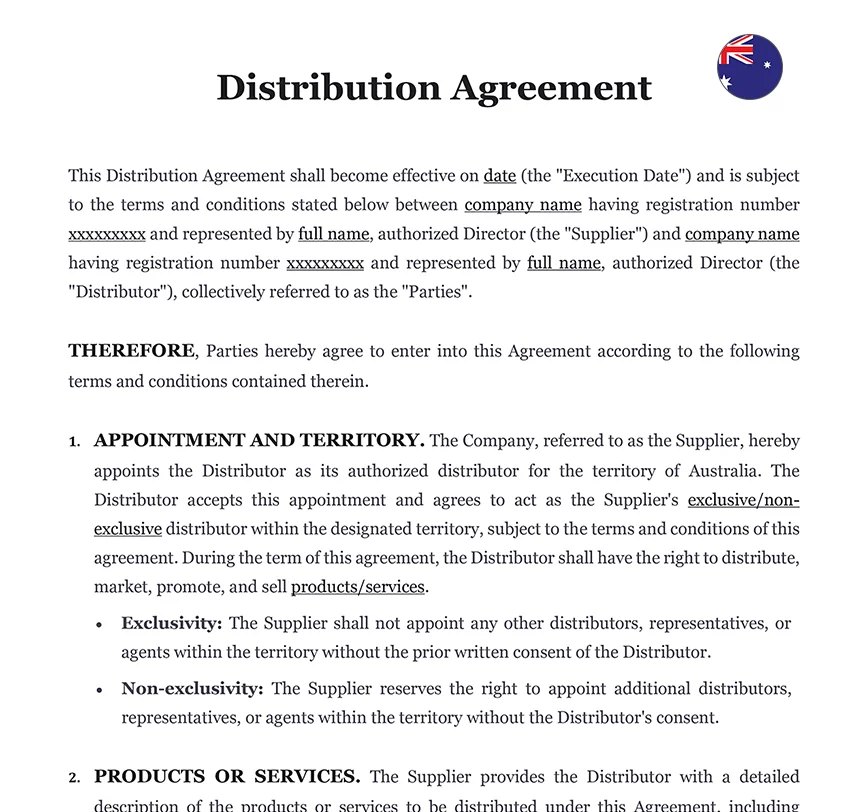Ready to use legal template
Drafted by experienced lawyers
Compliant with Australian law
Ready to use legal template
Drafted by lawyers
Compliant with Australian law
Home › Business contracts › Distribution Agreement
Learn more about Distribution Agreement in Australia
A distribution agreement is a legal contract between a supplier or manufacturer and a distributor outlining the terms and conditions of the distribution relationship. In Australia, a distribution agreement governs the distribution of goods or services to customers within a specified region or market segment. It defines the rights and obligations of both parties, including the responsibilities of the distributor, the terms of payment, the duration of the agreement, and any exclusivity arrangements. Our easy-to-edit templates streamline the document preparation process, ensuring that you have professionally crafted documents at your fingertips, ready to be customized to your unique needs.
Table of contents
-
What is a distribution agreement, and how does it work in Australia?
-
What are the key terms typically included in a distribution agreement in
Australia?
-
How do businesses negotiate favorable terms in a distribution agreement in Australia?
-
What legal requirements or regulations govern distribution agreements in Australia?
-
How do distribution agreements protect the interests of both parties in Australia?
-
What are the challenges businesses face when entering into distribution agreements?
-
How do businesses handle disputes arising from distribution agreements in Australia?
What is a distribution agreement, and how does it work in Australia?
A distribution agreement is a contractual arrangement between a supplier (manufacturer or wholesaler) and a distributor (retailer or reseller) outlining the terms and conditions of the distribution of goods or services. In Australia, distribution agreements typically involve the supplier granting the distributor the right to sell, market, or distribute their products within a specific territory or market segment. The distributor may purchase the products from the supplier at wholesale prices and sell them to end customers, earning a margin on each sale. The agreement governs the rights, obligations, and responsibilities of both parties, including pricing, payment terms, delivery arrangements, and marketing support.
What are the key terms typically included in a distribution agreement in
Australia?
Key terms typically included in a distribution agreement in Australia may include:
| ➤ Identification of the parties and their roles |
| ➤ Territory or geographic scope of the distribution rights |
| ➤ Duration or term of the agreement |
| ➤ Products or services covered by the agreement |
| ➤ Pricing, payment terms, and credit arrangements |
| ➤ Minimum purchase or sales requirements |
| ➤ Marketing and advertising responsibilities |
| ➤ Intellectual property rights and restrictions |
| ➤ Termination and dispute resolution provisions |




